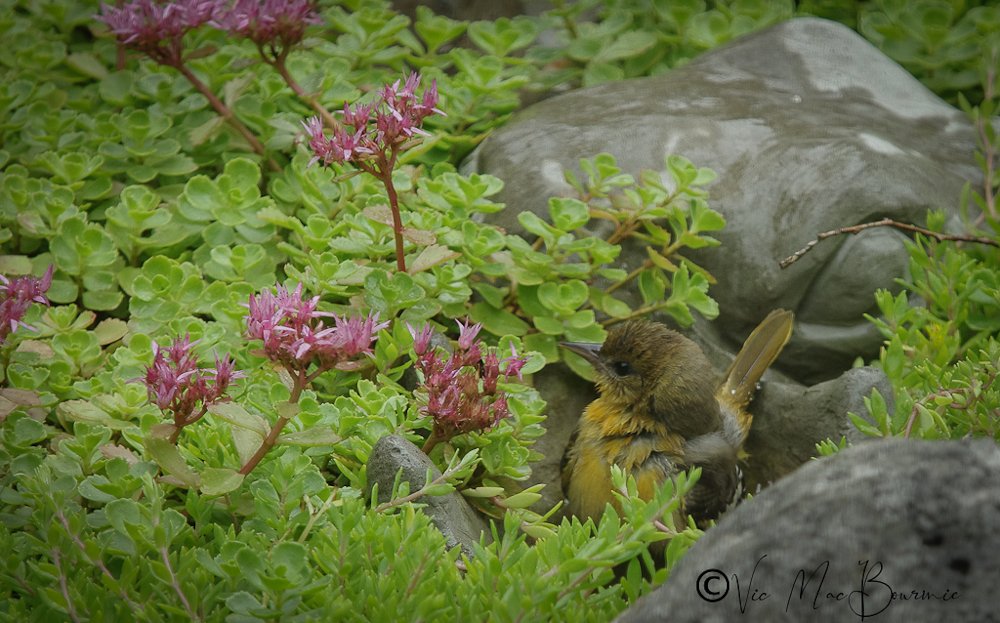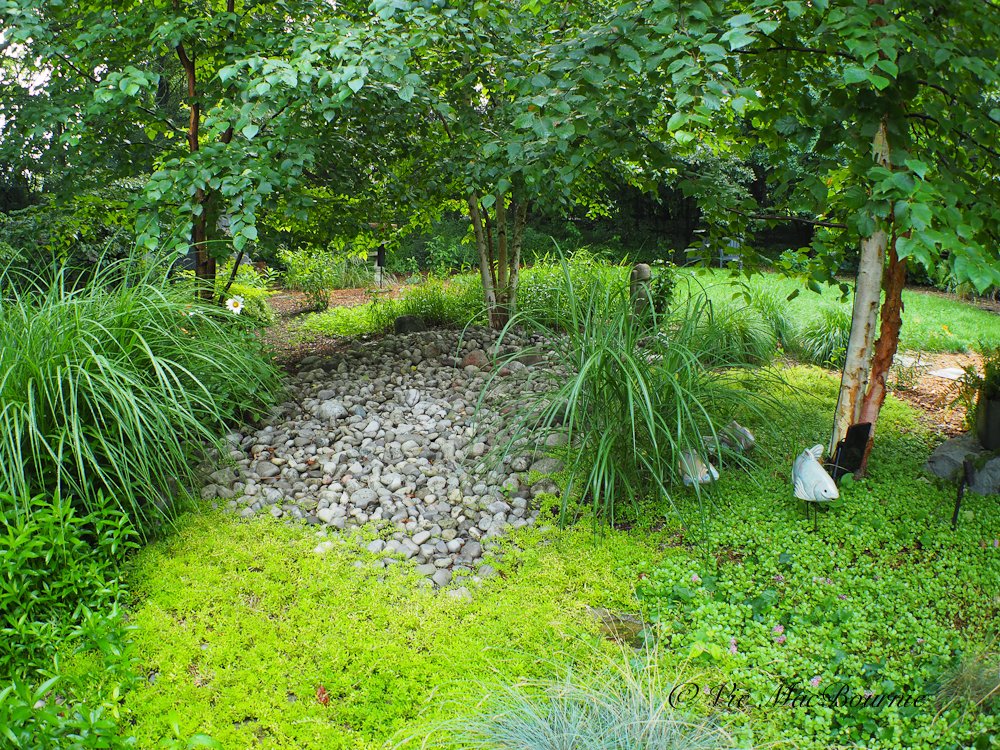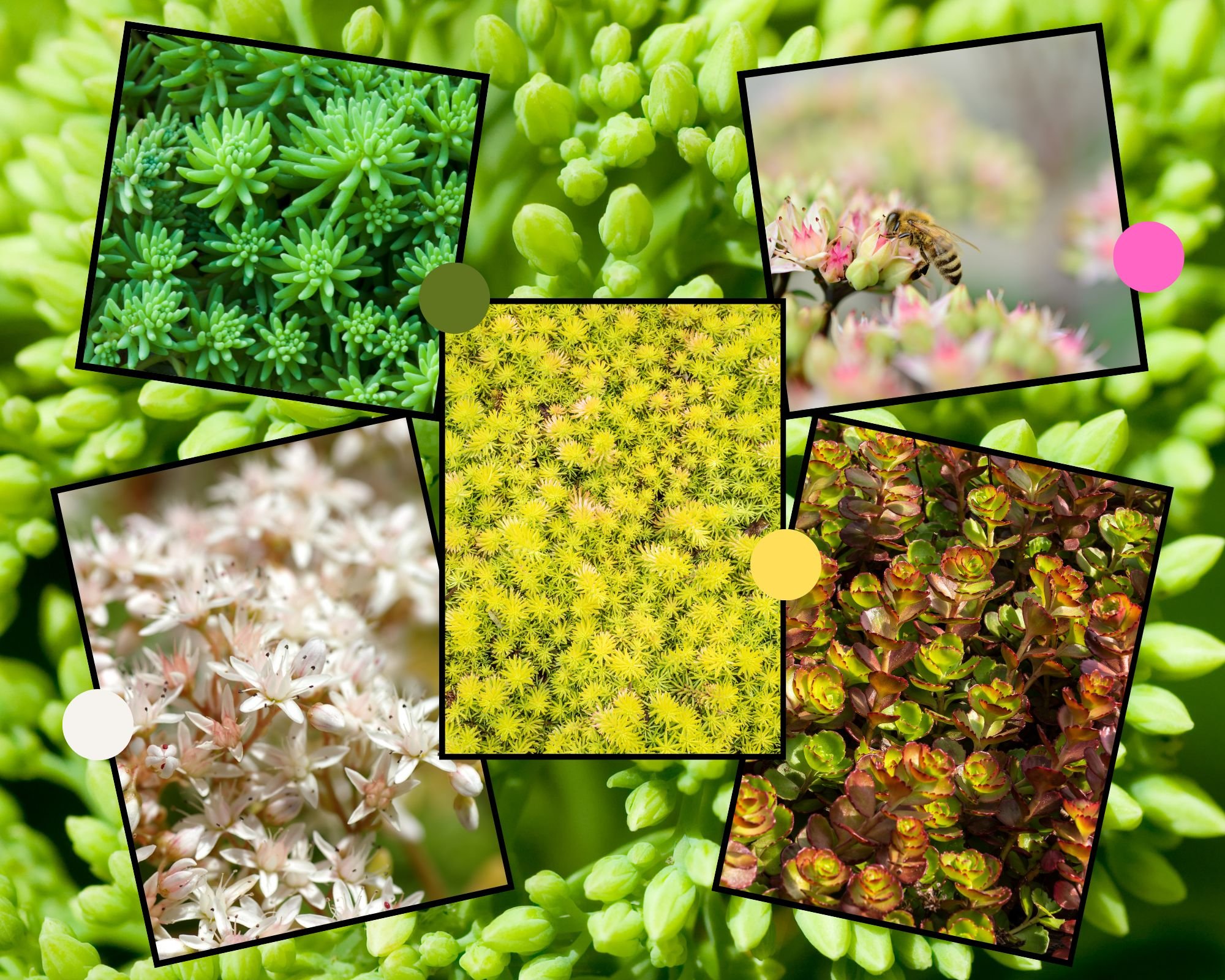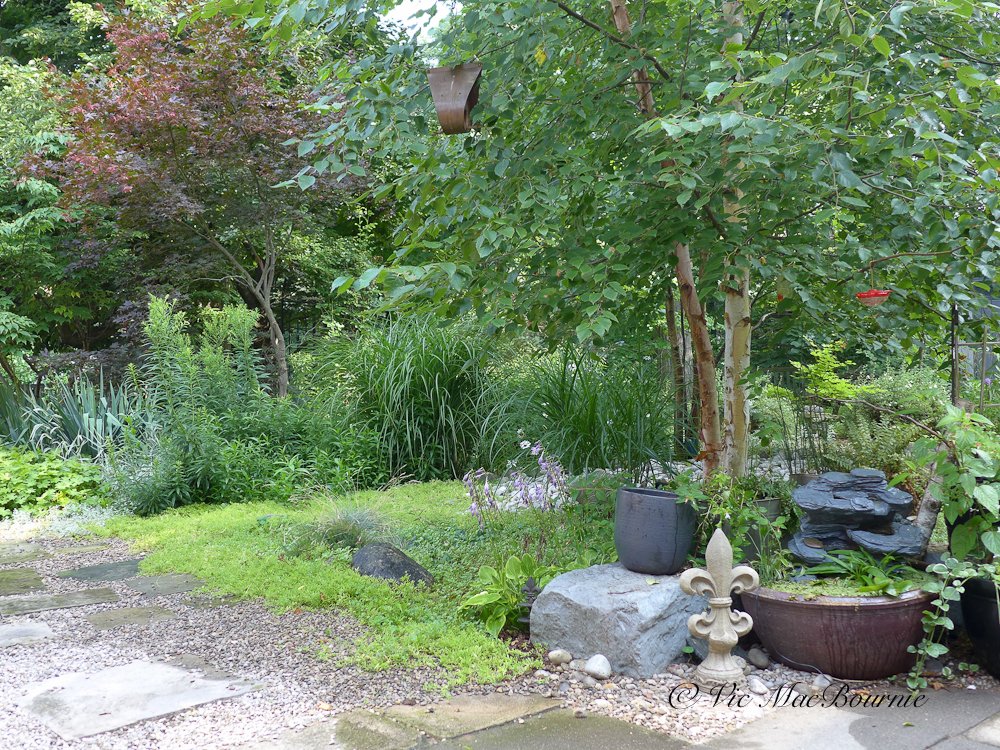Can sedum be used as a ground cover?
A young Oriole takes a bath among the sedum stonecrop ground cover in the backyard.
Stonecrop sedums are perfect for hot dry areas of the garden
Did you know that sedum, a remarkable plant known for its versatility, can also be used as a ground cover?
With its ability to thrive in various climates and soil conditions, sedum has become a go-to choice for many gardeners and landscape designers.
Many homeowners are familiar with sedum Autumn Joy combined with Black Eyed Susans and various ornamental grasses in the New American Garden landscape. Most, however, are unaware that sedum also excels as a ground cover.
The low-growing sedums are quick to spread but their shallow root systems mean they are not invasive and easily kept in check in the garden.
The sedum or stonecrop genus, part of the Crassulaceae family, comprises between 400–500 species, some of which are hardy down to zone 3. All sedums are fleshy succulents that store moisture in their leaves making them ideal for dry soils and arid regions.
Let’s explore the power of sedum as a ground cover and discover how it can enhance the beauty and functionality of your outdoor space.
Looking for more information on ground covers? Be sure to check out these posts for more ideas. Three Great Ground covers for the woodland garden, What is the easiest ground cover to grow, best native ground covers for shade
In our garden, two types of sedum stonecrop form dense mats along and into our pea gravel pathways. Both are low-growing sedum that perform well in hot, arid areas where other plants may struggle to survive.
An abundance of small yellow and pink flowers in late spring or early summer provides pollinators with an early food source, while creating a lovely changing tapestry of colour from spring into summer.
There are several different Sedum stonecrop that will work as a groundcover They include:
• Angelina stonecrop – (Sedum rupestre ‘Angelina’) a lovely gold-leaved sedum with tiny yellow flowers throughout the summer that grows to between 4-6 inches and is hardy from zones 3-9.
• Russian stonecrop – (Sedum kamtschaticum) unlike Angelina, this sedum has dark green leaves and golden yellow flowers that bloom later in the summer. It grows 3-6 inches in zones 3-8 with foliage that turns bronze in fall.
• White Sedum – (Sedum album) a standout ground cover that turns reddish in fall and is at home in rocky or poor soils. It grows to between 3-5 inches in zones 3-9 and sports white flowers.
• Murale – (Sedum album ‘Murale’) has pink flowers in spring that are particularly attractive to bees and butterflies. The bronze foliage of this low growing ground cover stays to a tidy 2-3 inches high and is hardy in zones 3-9.
• Purple Emperor – (Hylotelephium telephium) stands out because of its plum foliage and pink flowers that is ideal for rock gardens and sunny borders. It is a more upright growing sedum with a mature size of between 12 and 15 inches and is hardy through zones 4-9.
Other sedums to consider include Blue Spruce sedum (sedum reflexum ‘Blue Spruce’) hardy in zones 4-9 with needle-like foliage and yellow flowers in mid to late summer. Japanese stonecrop (Hylotelephium sieboldii) is hardy from zones 3-9 with its bright pink flowers and a mature height of between 3-4 inches.
Using sedum as a ground cover offers numerous benefits that can enhance the beauty and functionality of your outdoor space. One of the key advantages is its ability to suppress weed growth, saving you time and effort in maintaining your landscape.
Sedum also acts as a natural mulch, helping to retain moisture in the soil and reduce water evaporation. This makes it an excellent choice for areas with limited rainfall or where water conservation is important.
Additionally, sedum ground covers provide insulation, keeping the soil cooler in hot weather and warmer in cold weather. They also help prevent erosion by stabilizing the soil and reducing runoff.
With their low-growing and spreading nature, sedum ground covers create a lush carpet-like effect, adding texture and visual interest to your landscape.
And let’s not forget about the pollinators, Sedum flowers attract bees, butterflies, and other beneficial insects, making your garden a haven for biodiversity.
So, whether you want to create a low-maintenance garden, conserve water, prevent erosion, or simply add beauty to your landscape, using sedum as a ground cover is a smart choice.
How to grow sedum in your garden
Now that you know the benefits of using sedum as a ground cover, let's explore how to successfully incorporate it into your landscape.
First and foremost, it’s important to choose the right sedum variety for your specific needs. There are many different types of sedum, each with its own growth habit, color, and texture. (see above for descriptions of sedum varieties.)
Some varieties are more suitable for sunny areas, while others thrive in shade or partial shade.
Sedum are extremely easy to grow from cuttings.
Once you have chosen the right sedum, prepare the soil and plant the sedum plugs or cuttings at the recommended spacing, usually around 6 to 12 inches apart. Water the newly planted sedum thoroughly and keep the soil moist until the plants are established. After that, sedum is relatively low-maintenance and requires little watering.
However, it's important to monitor the soil moisture levels during dry periods and provide supplemental water if needed. To maintain the appearance and health of your sedum ground cover, trim back any overgrown or damaged foliage in early spring.
Whether you're using it to fill in gaps between pavers, cover slopes, or create a vibrant border, sedum will transform your landscape with its versatility and charm.
How to use sedum in your landscape
Let’s take a look at some inspiring examples of how it can transform your landscape.
One popular way to use sedum is as a vibrant border along pathways or garden beds.
The low-growing, colourful foliage creates a beautiful contrast and adds visual interest to any outdoor space.
Another creative use of sedum is to cover slopes or hillsides. The dense growth habit of certain sedum varieties helps prevent erosion and adds stability to the soil. Plus, the cascading effect of sedum spilling over the edges creates a stunning natural look.
Sedum also works wonders in rock gardens. Its ability to thrive in dry, rocky conditions makes it a perfect choice for adding texture and colour to these unique landscapes.
I like to mix different sedum varieties to create a tapestry of hues and shapes in the landscape.
Lastly, sedum can be used to fill in gaps between pavers or stepping stones. This not only adds a touch of greenery but also helps prevent weed growth and keeps the area looking neat and tidy.
Whether you’re looking to enhance your pathways, cover slopes, create a rock garden, or fill in gaps, sedum offers endless possibilities.




